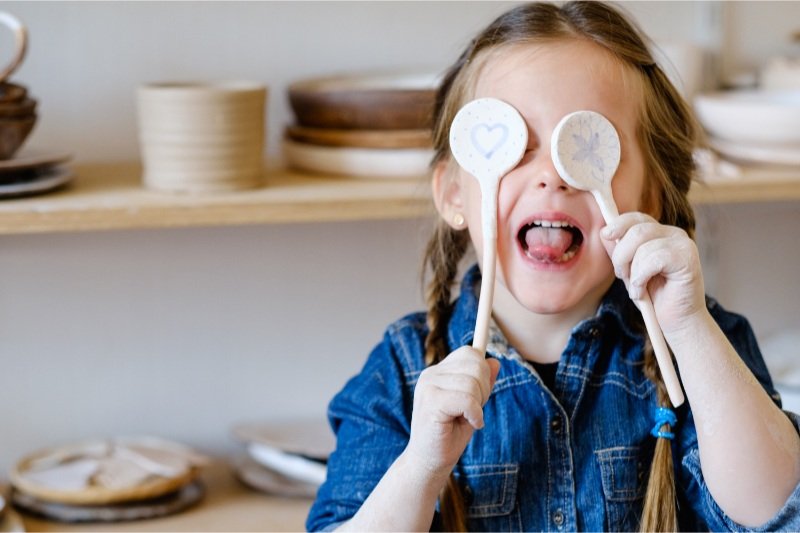What Happens in an Art Therapy Session?
by Alex Mowat (Art Therapist)
Collaborative art therapy sessions offer individuals and groups opportunities to learn how to work together, resolve conflicts, work through trauma, develop social and communication skills, and a safe place for expression. (Malchiodi, 2012).
Initial Appointment
Art Therapy initial consultations are structured similarly to our psychology initial appointments. If the client is under 18, the parent or caregiver will be asked to come in to provide background information and discuss ongoing therapy goals for the child/adolescent.
See our blog post about initial appointments at the Kidd Clinic - https://www.kiddclinic.com.au/blog/what-to-expect-at-an-initial-consultation-sessionnbsp
Ongoing Sessions
For face-to-face sessions, all art materials are provided, however, if you would like to work on a specific project that you have at home or a specific art medium that the clinic does not have, you are welcome to bring it in to your session.
If you are uncertain of what to make or how to begin, the creative arts therapist can provide a directive or a theme, but for most sessions, the client is encouraged to self-direct their artmaking.
Often our unconscious thoughts communicate through the artwork and its process, so it is not unusual if there is not much talking happening during a session. It is entirely up to the client how they wish to lead their session and whether they want to verbally share their experiences, or let their artworks do the talking.
There will be some time reserved at the end of the session to either verbally or non-verbally reflect on the artwork.
Can Art Therapy be conducted online?
Yes – the structure and delivery of the session is the same as an in-person art therapy session, but the client or parent will need to provide their own art materials. The creative arts therapist will be in contact with the client prior to the session with a list of suggested materials and a link for the session. You do not need artist quality art materials to have a successful online art therapy session - a piece of paper and pencil goes a long way.
Art Therapy online is a great alternative for families who don’t want to travel too far but also want the experience of an art therapy session. Like other therapies delivered online, we ask the client to prioritise sitting in a private and quiet space for their session to ensure confidentiality.
Does the Art Therapist make art too?
During instances when the client has felt nervous about being watched whilst they make art, they have requested the art therapist to make art alongside them. It’s not unusual for an individual to find a blank piece of paper daunting, and by either modelling the activity or beginning the drawing together, it can encourage those first steps to engage with the art materials.
Will my artwork be interpreted?
The art therapist might make a mental note of recurring patterns in an artwork or if a particular art medium is favoured, but their priority is to help the client who has created the artwork to work out their own interpretation and what that means for them.
Art Class vs Art Therapy.
Art classes are facilitated by a skilled teacher where the focus is on learning techniques to create a final product which differs greatly to art therapy where the focus is on the process rather than the finished piece.
What are the therapeutic benefits of Art Therapy?
It provides an easier way to express and process overwhelming or complex emotions by using visuals to articulate these feelings rather than relying on words.
The art therapist can validate and observe your art-making process. They can also provide insight to your emotions and body responses through reflections during the making process.
Why Art Therapy is a good fit for Neurodivergent clients.
Art therapy provides a creative non-restrictive environment where the emphasis is on creation and enjoyment of the art-making process, removing the pressure to make a typical ‘perfect’ artwork.
Increasing tolerance to overstimulating sensory stimulus such as wet clay or the smell of paint through an enjoyable activity.
Art can be used as an alternative to verbal communication.
Art can be used as a visual representation of our unconscious thoughts and by looking at it, bringing these emotions to conscious thought.
Working collaboratively in both joint and parallel artmaking can create positive social communication and connection which encourages non direct problem solving when creative differences arise.
The artwork itself provides a conversation talking point, therefore taking the pressure off the participant to talk directly about themselves.
Is Art Therapy just for kids?
No, Art Therapy can be suitable for all age ranges, not just limited to children and adolescents.
Art Therapy has been widely implemented in health facilities all around Australia because of its value in supporting teens and adults with mental health difficulties.
Art activities can stimulate the processing of unconscious thoughts that may be less accessible through talk therapy.
Art Therapy directives can provide a theme for the client to reflect on obstacles in adult life and explore ways of problem solving these issues.
Many parents appreciate the quiet, supportive, and creative space provided during Art Therapy to process their emotions away from their busy parenting work.
To learn more about art therapy, here is the link to the peak professional body of creative arts therapists in Australia and please refer to our page on Art Therapy at the Kidd Clinic.
https://www.anzacata.org


